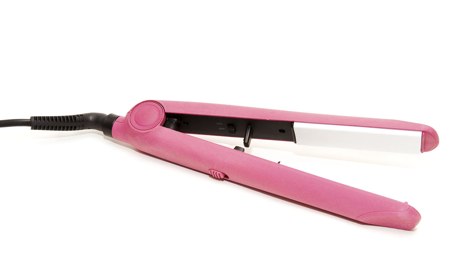The west is fixated on Muslim veils, but all women's hair is bound in ideals of femininity, and a source of male judgment

'The time and money women spend on their hair isn’t just the free exercise of personal preferences, it’s part of a broader cultural performance.' Photograph: Ruslan Kudrin/Alamy
Packing for a winter holiday in The Muslim World can be tricky. Is the same outfit that dazzled a Shia fundamentalist in Iran going to be considered passé in Afghanistan? Does a classic black niqab work across all regions, or should you occasionally flash a little face?
These are all difficult questions. Luckily, however, the Pew Research Center has combined data visualisation with clip-art Orientalism to create a one-glance guide to female fashions in Muslim-majority countries. Pew has managed the impressive feat of reducing millions of women across markedly different regions down to just six stock "Muslim woman" cartoons. I don't want to oversimplify, but the overall conclusion from the visual is that some Muslims find faces acceptable, but most Muslims hate hair.
The Pew illustration is based on data from a wide-ranging survey conducted by the University of Michigan across seven predominately Muslim countries. While the survey looked at a number of topics, it is veiling that has been most seized upon by the press. As an article in Foreign Policy says: "Researchers investigated public perception of several hot-button issues … [but] one of their more interesting findings had to do with veiling."
Really? I mean, are veils really that interesting? As far as I can see the most interesting finding from the study is that it is yet another demonstration of the west's bizarre fixation on what Muslim women wear and how they cover their hair.
In part, this obsession seems to stem from the importance hair holds as a social and sexual signifier in non-Islamic countries. Back in 2001, Hillary Clinton gravely told the Yale College graduating class: "Your hair will send significant messages to those around you: what hopes and dreams you have for the world, but more, what hopes and dreams you have for your hair. Pay attention to your hair, because everyone else will.'' Clinton was being sarcastic. But in vitriol veritas: hair matters. Particularly if you're a woman.
Studies have found that the average woman in the UK spends £26,500 on her hair over her lifetime, with 25% of respondents saying they would rather spend money on their hair than food. And women don't just spend serious money on their hair, they spend serious time on it. On average, British women spend just under two years of their lives styling their hair at home or in salons.
Whether it's covered by a veil or coloured by Vidal Sassoon, hair is a feminist issue. Indeed, hair is so bound up with ideals of femininity that, to some degree, the measure of a woman is found in the length of her hair. In the semiotics of female sexuality, long hair is (hetero)sexual, short hair is non-sexual or homosexual, and no hair means you're either a victim or a freak. When Natalie Portman shaved her head for a film role she summed up these stereotypes with the observation that: "Some people will think I'm a neo-Nazi or that I have cancer or I'm a lesbian." But Portman also added: "It's quite liberating to have no hair."
Involuntarily losing your hair is an incredibly traumatic thing. When I was anorexic it was the fear of going bald that prompted me to get better, rather than, you know, the possibility of osteoporosis or infertility or death. Pulling out clumps of your hair is like pulling out clumps of your identity. But isn't it a little worrying that a bunch of dead cells on your head holds this much power? And isn't it odd that we should talk about chopping off our locks as "liberating?"
In a sense, women's hair in the west functions as it's own sort of veil, one which most of us are unconsciously donning. The time and money women spend on their hair isn't just the free exercise of personal preferences, it's part of a broader cultural performance of what it means to be a woman; one that has largely been directed by men. Rather than fixating on what the veil means for Muslim women, then, we should probably spend a little more time thinking about our own homegrown veils. Because it's still an unfortunate fact that, across the Muslim and non-Muslim world, women are often judged more by what is covering their head that what is in it.

No comments:
Post a Comment